
Given his cultured background from art pieces to statement furniture, Daniel Lampa, listed 7 of the most Iconic (not the usual) chairs by collectors and designers alike, so you too can be well-informed of the who’s who in furniture design.
Red and Blue Chair
Designed by Gerrit Rietveld
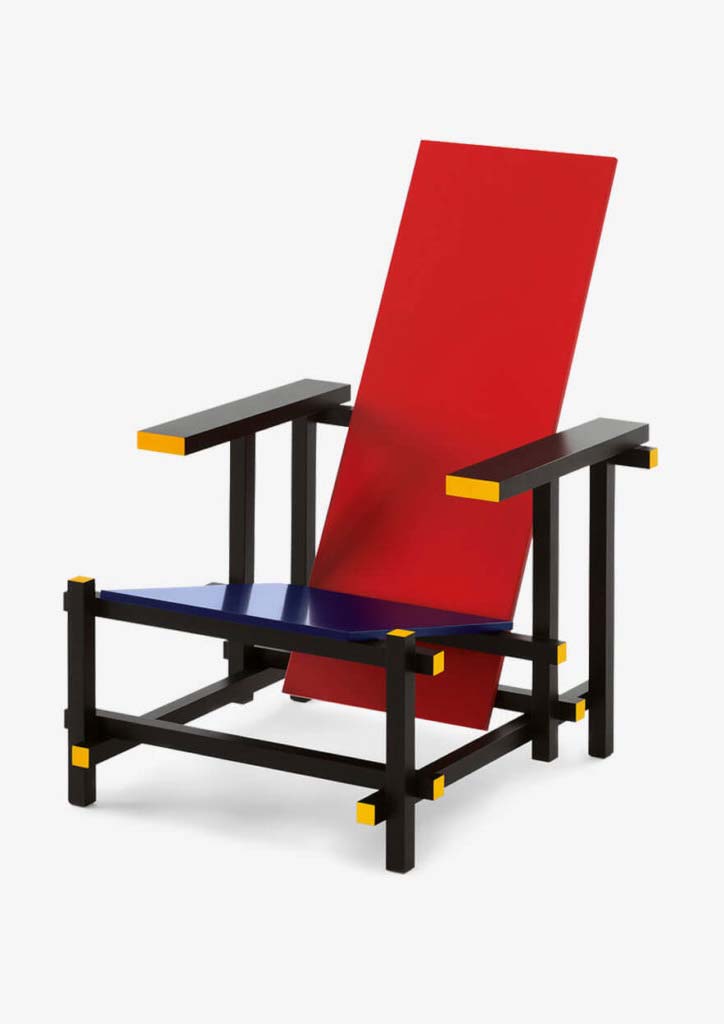
Born in 1888 in a small city in the Netherlands called Utrecht, Gerrit began working in his father’s furniture workshop at the age of 11. He studied at the Utrecht Museum of Applied Arts and in 1917, he opened his workshop. He thought that the usual handcrafted furniture of the time was too expensive, heavy, and also too labor-intensive. He wanted to find ways to make something much simpler in style. The modernist art movement called “De Stijl”, whose members included the painter Piet Mondrian and Theo van Doesburg greatly influenced his works.
The start of his success was when his slatted chair, in unstained beech version at the time, was featured in the De Stijl art journal edited by Theo van Doesburg in 1919. People commended this chair for its simplicity, clarity, and, in his own words, “honest design”.
In 1923, Gerrit, who also designed the main building of the Van Gogh Museum in the Netherlands, applied a high-shine lacquer to the chair using Red, Blue, and Yellow colors in such a way that the planes of color appeared to float as suggested by Bart van der Leck, a fellow artist. Today, this iconic chair is being distributed by Cassina.
Alta Armchair and ottoman
Designed by Oscar Niemeyer
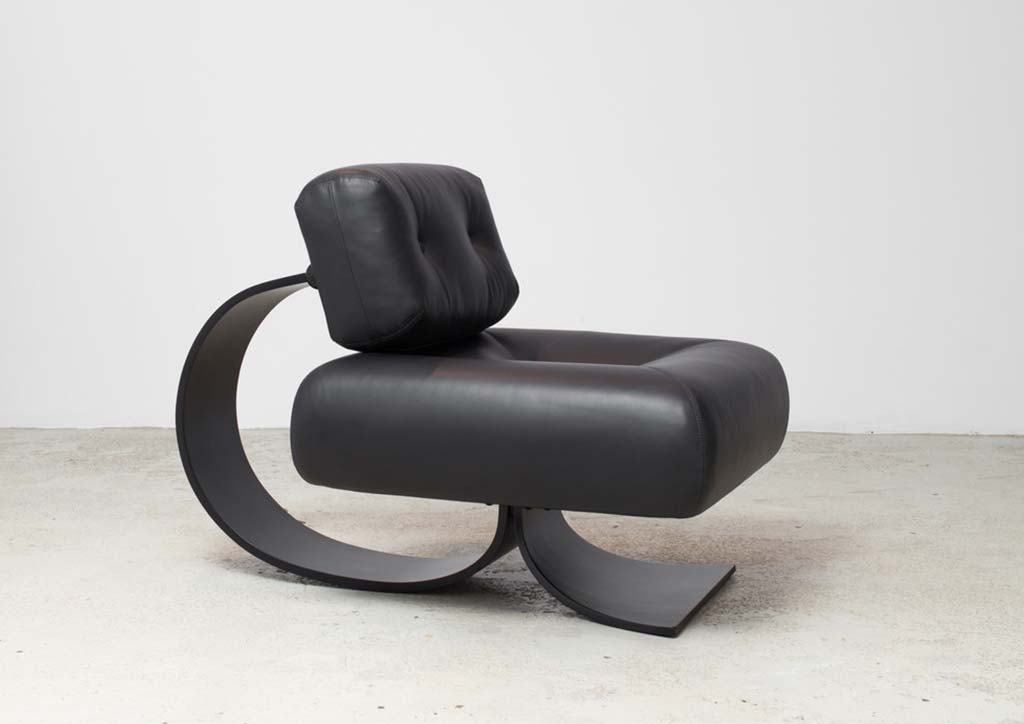
Oscar was born in Rio de Janeiro in 1907. He graduated in architecture from the National School of Fine Arts, in Rio de Janeiro, in 1934. That same year, he began working at the office of architect and urban planner Lucio Costa. in 1936, he assisted another legend, French-Swiss architect Le Corbusier to create the plans for the headquarters of the Ministry of Education and Health (MES), in Rio de Janeiro.
Throughout his career and life, Niemeyer received international recognition for his participation in the design for an impressive number of institutional and residential buildings, in Brazil and abroad. Being a member of the Communist Party, he had to leave Brazil and did not return until 1985, when democracy was restored. It was in the early 1970s that he began to consider designing furniture. The base and form of the Alta armchair and ottoman are exemplary of Niemeyer’s exquisite curves he would later make famous in his iconic modernist architecture.
Bibendum Chair
Designed by Eileen Gray
Eileen Gray was born in Ireland in 1878. She grew up in London and moved to Paris in 1902. After studying cabinet making and lacquer work, she was quickly regarded as one of the top designers of decorative screens and panels. It was on Rue De Fabourg Saint Honoré where she opened her first gallery called Jean Désert. During the 1920s and 1930′ she was already considered to be an outstanding figure of the modern movement, including Le Corbusier and J.J.P Oud.

Bibendum chair’s design and name were greatly influenced by the mascot of the Michelin Tire Company. The name of the mascot is Bibendum and not Michelin Man. She sold the chair in her shop on Rue De Fabourg Saint Honoré. An original edition of this chair still takes pride in the main area of Villa E1027- her first architectural project she designed with Jean Badovici, her then partner in Roquebrune Cap Martin on the French Riviera. The chair’s unique shape creates a strong focal point, which is one of the reasons why it remains popular for almost a century. This chair is available through Aram Designs.
Ribbon Chair
Designed by Pierre Paulin
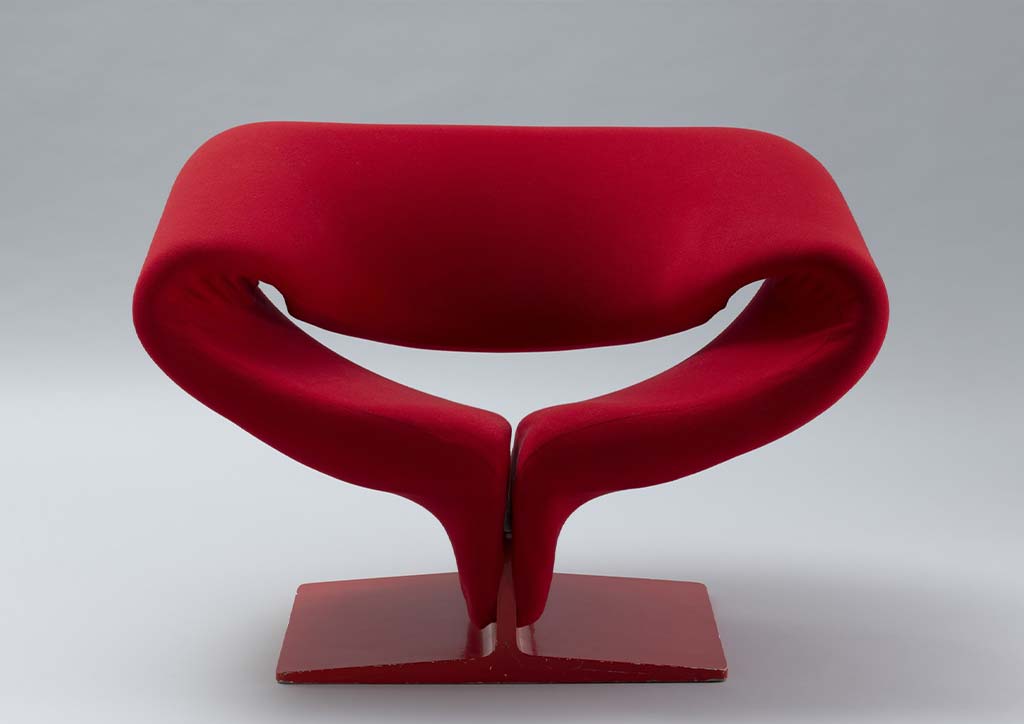
Related Article:https://pierre-paulin.uber-modern.com/?gclid=EAIaIQobChMItY-Q_Iet8QIVUH8rCh2aIAQPEAAYASAAEgKkVfD_BwE
In 1927, French designer Pierre Paulin was born. Before making his debut in the early 1950s, He studied stone carving and clay modeling at the École Camondo in Paris. Paulin wanted to design his own furniture but had a hard time finding a manufacturer. In 1953, he produced his furniture pieces that were showcased at the Salon des Arts Ménagers. He first got recognition when he partnered with Artifort and designed the Mushroom Chair in 1959. Almost a decade after he designed another iconic chair, the Tounge Chair. In 1975, he founded ADSA, a design agency that advised the industry in creative direction and brand image, it also produced designs for products and public spaces that up until today, are still considered iconic.
Pierre Paulin’s designs are distinctive in their striking sculptural shapes and earned him many prizes worldwide. He was successful in developing furnishings with flowing lines and almost surreal naturalistic forms. Even many years after his passing, his works remain timeless and progressive. The company Artifort sells the Ribbon Chair.
Polar Bear Chair
Designed by Jean Royère
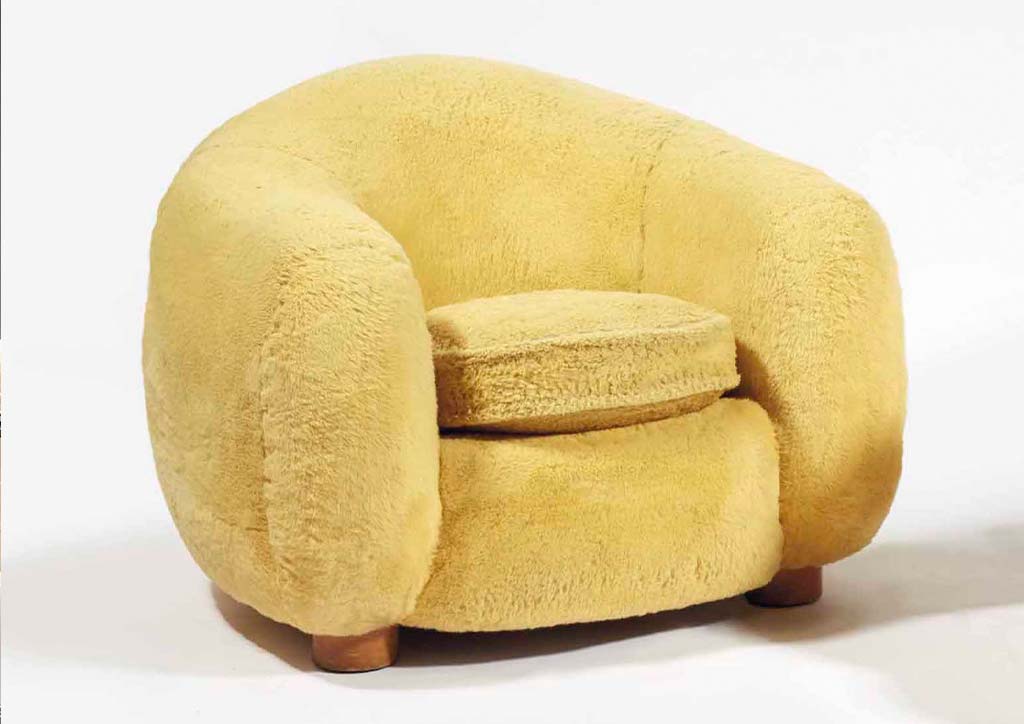
Jean Royère was born in 1902 in Paris. He studied at Cambridge University. Even with his father’s disapproval, He left his job in the import-export business of his uncle in 1931 to pursue furniture design. For two years, he apprenticed under a furniture maker in Paris. He then joined a competition to design the Brasserie Carlton on the Champs-Elysées and eventually won. Because of this, he was eventually discovered and led to his first show at the Salon d’Automne. In 1947, he did his mother’s Paris apartment. This is where he first used the Iconic polar bear sofa and chair. Because everything he produced was made to order, quantities were limited. Clients could commission an individual Polar Bear sofa or pair of armchairs, or they could get them together as a set.
His chairs and sofa prices took a notable upward turn a decade ago. On 1stdibs the average price is $5,900, while the lowest priced sells for $869 and the highest can go for as much as $12,000. As noted by François Catroux, a french decorator, “They’re unusual, they’re beautiful, they’re rare, and everyone looks so elegant and relaxed sitting on them.” These chairs are so rare you can only find them in galleries and auction houses.
Clam Chair
Designed by Philip Arctander
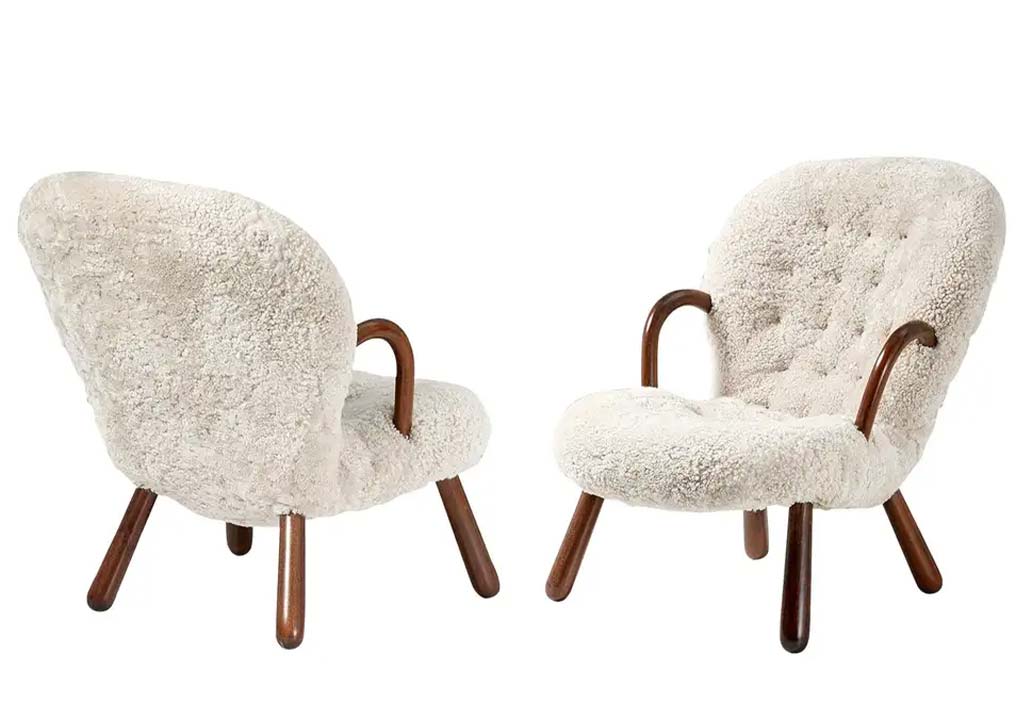
Philip Arctander was born in 1916 in Copenhagen, Denmark. He is originally known for his UN advisory role supporting affordable housing and his directorship at the Danish Building Research Institute until 1981. In 1944, he and a few other architects were tasked to design furniture as part of a contest by a newly-opened supplier NY FORM A/S in Copenhagen. His contribution was the beech-legged and sheepskin-backed Muslingestol or Clam Chair. The chair immediately had a limited Copenhagen release. By the time he left the furniture profession entirely sometime in the late 1940s, the Clam chair abounded as Nordic suppliers like IKEA took the design into a brief period of mass production
When the chair began being sold on auctions in the late 1990s, it was sold uncredited. For nearly two decades, the chair was obscured by mystery, had a lot of misattributions along the way. One was the Danish architect Viggo Boesen, as well as “Martin Olsen,” which was discovered, was nothing but the name of a furniture store in Norway that no longer existed. Thankfully, Arctander’s childhood friend and colleague, the Danish architect Poul Erik Skriver, confirmed it was indeed Arctander who designed the chair.
Its mysterious history, it seems, has only added prestige to the Clam Chair’s iconic status. In 2013, a pair (misattributed to Martin Olson) went for over $220,000. Very far from the $300 price tag it originally garnered in late 90s auctions.
Paimio Lounge Chair
Designed by Alvar Aalto
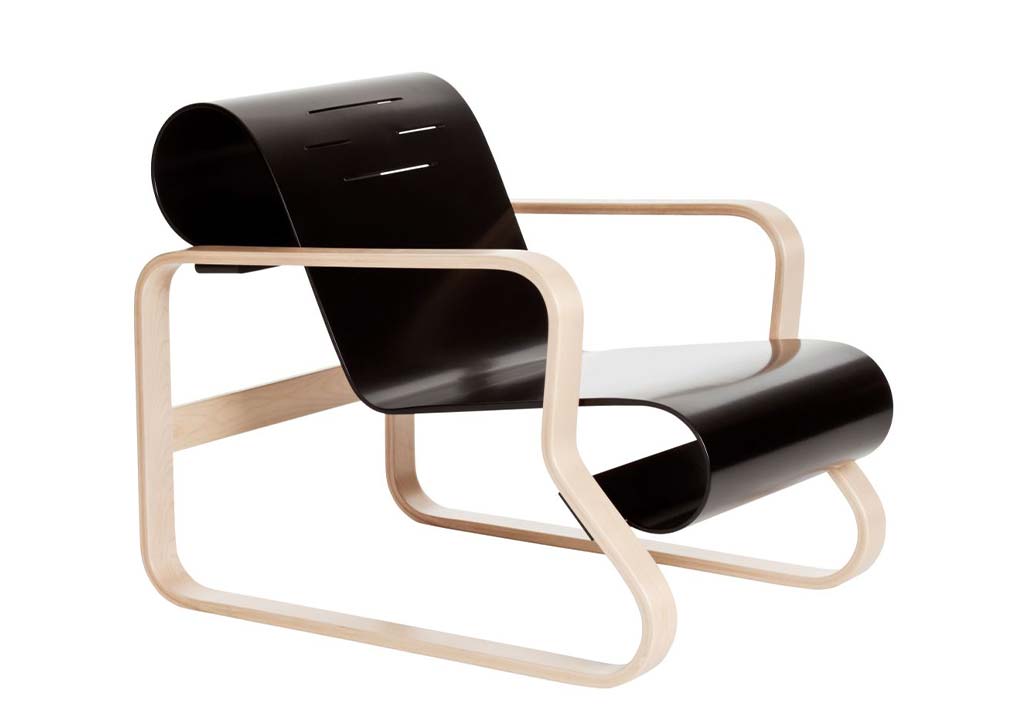
https://bluprint-onemega.com/5-chairs-know-right-now/
Born in 1898, Alvar Aalto’s architectural studies at the Technical Institute of Helsinki were interrupted by the Finnish War of Independence, in which he participated. Aalto set up his first architectural practice in Jyväskylä in 1921. Until the early 1930s, he traveled to Europe frequently with his wife who also an architect. Through this, they became familiar with the latest trends in Modernism. The pure Functionalist phase in Aalto’s work lasted for several years. In 1929 Aalto designed a tuberculosis sanatorium in a small town in Finland called Paimio, which was considered an important functionalist milestone. He wanted to supply the sanitarium with furniture that was more comfortable than the newly introduced Bauhaus metal furniture. The Paimio Lounge chair was among the furnishings he designed in the sanatorium. The chair was used in the patients’ lounge. The angle of the back of the armchair was intended to help the patients breathe more easily.
It is noted that American designers Charles and Ray Eames and the Finnish-born Eero Saarinen were greatly inspired by Aalto’s bentwood furniture. In 1935 the company Artek was established in Finland to mass-produce and distribute wood furniture designed by Aalto and his wife, Aino. Most of their Iconic designs which include The Tea Trolley, the Aalto stools, the Paimio lounge, a few tables, and lamps remain in production and can still be bought at Artek.com
Notes about the Contributor
Daniel Lampa
Art enthusiast and into Fashion, French Culture, Mid-century modern design and spends a lot of his time curating his home in Manila and LA. He lives with his 3 dogs, Coco, Yohji and Junya.


